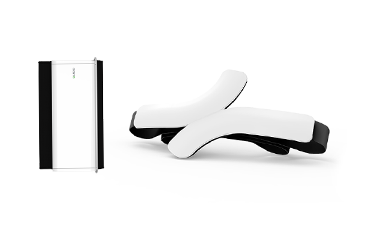Each year more than 700,000 Americans have a heart attack. For more than 200,000 of them it is their second heart attack. Following the proper recovery methods and knowing the complications that can occur after a heart attack is important to help prevent repeated heart attacks. Learn about the post heart attack complications and recovery process to stay safe and healthy.
What is a heart attack and why does it happen?
A myocardial infarction, or heart attack, occurs when the flow of blood to the heart is partially closed or blocked, usually by a buildup of fat, cholesterol, or other bodily substances. This forms plaque in the arteries that feed the heart. The interrupted blood flow can damage or destroy part of the heart muscle.
Want to know more about heart attacks? Check our article ”Heart attack: causes, symptoms, treatment and prevention.”
How long does it take to recover from a heart attack?
Post heart attack recovery time is dependent on the level of severity. Generally, people will stay up to a week at the hospital, but if there are complications, a patient’s stay can be anywhere from two weeks to three months on average. There is no set recovery time for hospitalization or at home recovery, it is dependent on a doctor’s opinion and the seriousness of the heart attack in each situation.
What is the recovery process after a heart attack?
Recovery starts in the hospital and continues at home after the patient is discharged. The goal of the recovery process is to restore physical activity through exercise and reduce the risk of another heart attack by making lifestyle changes, while monitoring mental health to help prevent anxiety and depression.
Cardiac rehabilitation is a popular form of recovery that generally begins during hospitalization and continues at home. Cardiac rehabilitation focuses on living a heart healthy life and helps people make the necessary lifestyle changes. This would include a diet change to focus on heart healthy foods, exercising, and helping people deal with the emotional stress that a heart attack causes.
How long does it take to resume normal activities?
Resuming normal activities is dependent on the severity of the heart attack and the doctor’s opinion. Most people are able to return to work in about two weeks, except for those who perform heavy manual work, who typically need more time to ensure they are recovered enough to resume work as normal. When it comes to resuming intimacy in your relationship, doctors usually advise to wait four to six weeks post heart attack. If you drive a vehicle, generally, you will be able to resume driving one week after a heart attack, if your heart attack wasn’t a severe one.
What are the complications of a heart attack?
Complications are often related to damage done to the heart during the heart attack that leads to further problems. The most common complications are arrhythmias (abnormal heart rhythms), heart failure, heart rupture, cardiogenic shock, and valve problems.
Post heart attack complications are very dangerous if left untreated, so it is important to have an understanding of the most common heart attack complications. The development of arrhythmia leads to abnormal heart rhythms, or electrical “short circuits,” that result in abnormal heartbeats like tachycardia (beating too quickly), bradycardia (beating too slowly), and atrial fibrillation (beating irregularly). Arrhythmias develop due to the damaged heart muscle disrupting the electrical signals sent by the body to control the heart. While severe arrhythmias are a serious life-threatening condition, survival rates have improved due to the invention of the portable defibrillator. Mild arrhythmias are usually controlled with medications.
These types of heart problems occur when the remaining heart muscle cannot adequately pump blood from the heart to your body. This generally occurs on the left side of the heart and is treatable with medication and possibly surgery.
Cardiogenic shock is similar to heart failure, but it is even more serious. Cardiogenic shock occurs when the heart muscle is so damaged it can not longer pump enough blood to maintain the body’s functions.
Learn more about arrhythmias and tachycardia in our articles ”Let’s talk about (abnormal) heart rhythm” and ”Tachycardia, fast resting heart rate and your heart health.”
What are other common complications after a heart attack?
There are other immediate and future complications that can occur after a heart attack. Some common immediate complications include hypoxemia, pulmonary, deep vein thrombosis, and ventricular aneurysms. Hypoxemia occurs when the blood oxygen levels become too low which can damage the brain, liver, and other vital organs. Pulmonary edema is a condition where fluid accumulates in and around the lungs making it difficult to breathe. Deep vein thrombosis is the formation of blood clots in the deep veins, generally in the leg and pelvic areas. An aneurysm is the buildup of scar tissue in the heart which leads to blood clots, low blood pressure, and abnormal heart rhythms. Ventricular aneurysm occurs when one of the chambers in the heart forms a bulge.
Discover more about low blood pressure in our article ‘‘What is low blood pressure? Quick facts on hypotension.”
Some common future complications post heart attack include aneurysms, angina, edema, and pericarditis. An angina often feels like a heaviness or tightness in the chest and occurs when the arteries that supply the heart muscle with blood and oxygen become narrow, restricting the amount of oxygen that reaches the heart. Another complication is edema which is the accumulation of fluid in the legs and ankles. Pericarditis causes serious chest pain due to the lining of the heart becoming inflamed.
Not everyone will develop these complications, but it is always a good idea to monitor for symptoms and see a doctor if anything hurts or does not feel normal.
If you believe you might be at risk for a heart attack or have a family history of heart attack talk to a doctor right away. It is never too early or too late to start monitoring and watching for signs of a heart attack. QardioArm is the smart blood pressure monitor that connects with your smartphone or tablet. With QardioArm monitoring blood pressure and heart rate it has never been easier taking care of your heart health. QardioCore is the continuous ECG monitor that measures heart rate, heart rate variability, skin temperature, respiratory rate, and tracks physical activity. QardioCore is particularly suited for people with increased health risk caused by family predisposition, history of heart attacks or strokes, high blood pressure, high cholesterol, diabetes, and excess weight.
Sources:
Medical News Today
Mayo Clinic
NHS
CDC




